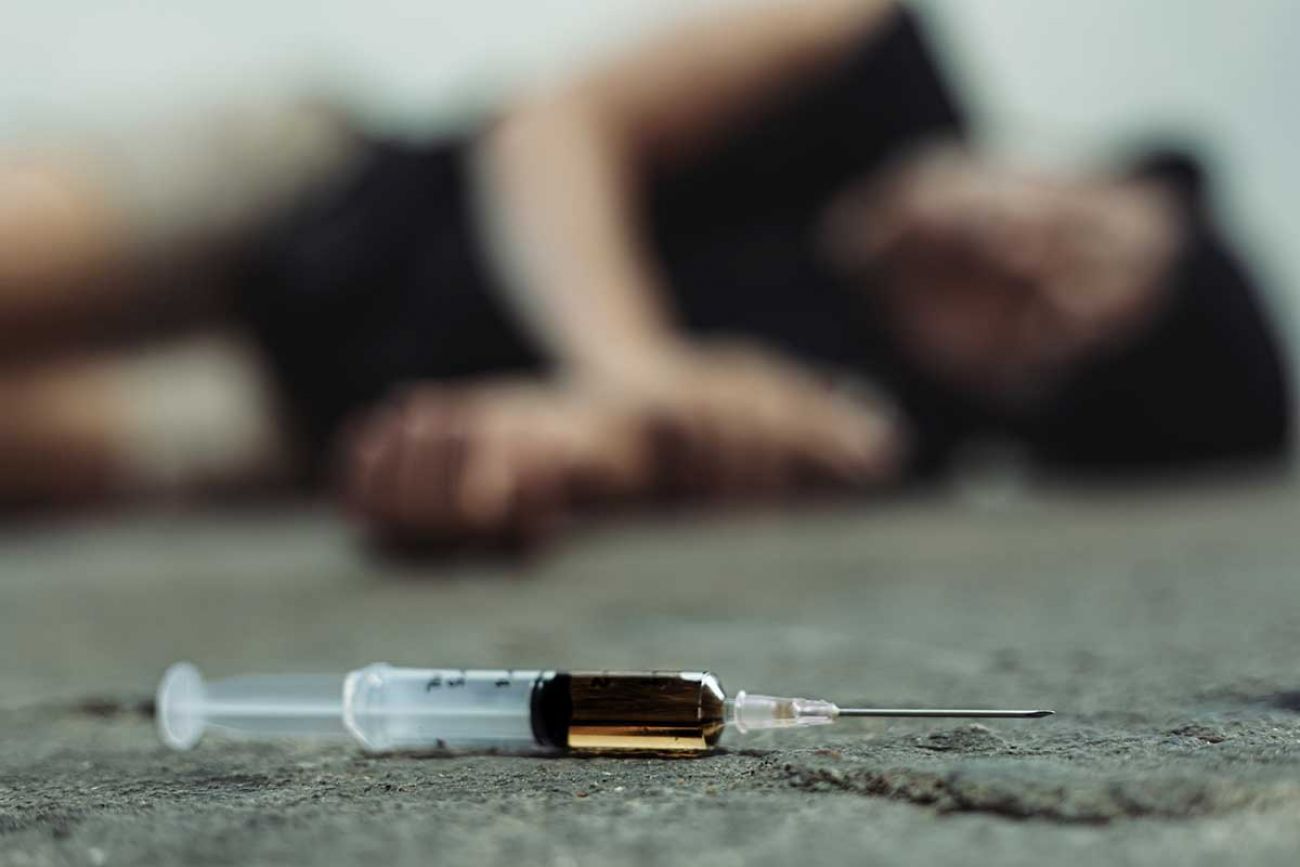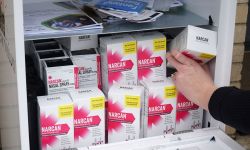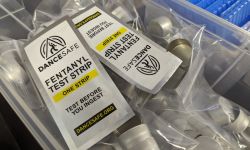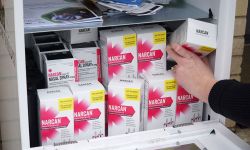Did COVID fuel drug overdoses? Michigan deaths surged last year.

COVID-19 overshadowed the opioid crisis in Michigan last year, but newly released data suggests the pandemic may have helped fuel an increase in drug deaths.
Drug overdose deaths in 2020 climbed 16 percent in Michigan over the previous year — reaching an all-time high of 2,743 deaths, according to preliminary data released this week by the U.S. Centers for Disease Control and Prevention.
Nationally, there were more than 93,000 drug deaths last year, a 30-percent jump. Experts attribute the spike to the isolation and strangeness of a pandemic that ground down the mental health of so many, but especially those who fought addiction.
Related stories:
- Latest effort to reform Michigan’s mental-health system finds critics
- Opioid abuse surges in Michigan amid misery from the coronavirus
- Northern Michigan pushback to clean needle programs for drug users
- Recreational pot is nestling comfortably into small-town Michigan
“Isolation, loss of job insecurity — all of those things are big-time stressors for anybody,” said Dr. Andrew King, an addiction specialist with the Wayne State University’s physicians group and an emergency room doctor at Detroit Medical Center’s Receiving Hospital.
“People with substance use disorder in particular, might be at a higher risk of returning to use, potentially overdosing,” he said.
The jump in deaths began in the first months of the pandemic in early 2020 and was especially prevalent among Black Michiganders, according to an interactive data dashboard the state launched last month. (The state data shows 59 fewer deaths last year than the CDC, in part because the state does not include out-of-staters who died in Michigan.)
Like the national data, the numbers on the state dashboard are preliminary.
But the trends aren’t surprising.
Kalamazoo-based medical examiner Dr. Joyce deJong saw the problem coming last summer.
Her team reviewed 289 drug deaths in 12 western and northern Michigan counties, releasing the final data last month. According to the report, among those who died:
- 3-in-5 were listed as unemployed
- Roughly 2-in-5 had been diagnosed with depression
- And 1-in-10 had previously tried to commit suicide
Among the deaths, deJong told Bridge Thursday, were “a large proportion” who appeared to have been substance free for months or years before the pandemic struck.
But driving the upswing in overdose deaths, too, were those who were released from jail in the early days of the pandemic. From March to June, 13 people died within three weeks of being released, according to her report.
The data provided by deJong’s office offered personal details of the fallout, — details sometimes lost in the hard data of dashboards and reports.
Thirty of the dead were parents living with their minor children.
More than half died at home.
Four in five were using drugs alone when they overdosed.
Early on in the pandemic, State Rep. Jack O’Malley pressed Gov. Gretchen Whitmer’s administration to produce data to measure the toll of isolation on residents.
“People who normally don't deal with anxiety and stress and mental problems — we were all dealing with them,” the Lake Ann Republican told Bridge Thursday.
And there may have been something else, said O’Malley, a critic of pandemic emergency orders that the Whitmer administration said would help slow down the spread of the virus: “Just from a recreational side of things, you're sitting around with nothing to do.”

deJong also noted an increase in deaths involving fentanyl.
The synthetic opioid, which is 50 times or more powerful than morphine, was found in 72 percent of the drug-overdose cases, or 208 cases. In the previous two years, it was present in about half of the overdose cases.
“Any hit of heroin is like playing Russian roulette. It's potentially deadly,” said King, the Detroit emergency room doctor. “It's very rare now for me to see any patient who has not been exposed to fentanyl. Fentanyl is almost ubiquitous.”
And because people were less likely to be with loved ones or friends during the pandemic, they were less likely to have someone close when they overdosed to administer naloxone, an emergency medication that’s used to reverse opioid overdoses.
King tells patients that, if they’re going to use, be with someone with naloxone. “But in the case of the pandemic, if people are more isolated and not socializing, then sometimes it can be too late,” he said.
Last summer, the state launched a naloxone portal, allowing organizations to more quickly acquire and distribute the drug. Since then, the state has given out more than 150,000 naloxone kits, said Amy Dolinky, Senior Advisor for Michigan Opioids Strategy in the Michigan Department of Health and Human Services.
That may have blunted the climb in drug deaths, she said.
“What we do know is that (COVID) really changed the lives of people across Michigan,” Dolinsky said, “and we recognize that may have played a role in the change in our overdose numbers.”
See what new members are saying about why they donated to Bridge Michigan:
- “In order for this information to be accurate and unbiased it must be underwritten by its readers, not by special interests.” - Larry S.
- “Not many other media sources report on the topics Bridge does.” - Susan B.
- “Your journalism is outstanding and rare these days.” - Mark S.
If you want to ensure the future of nonpartisan, nonprofit Michigan journalism, please become a member today. You, too, will be asked why you donated and maybe we'll feature your quote next time!








